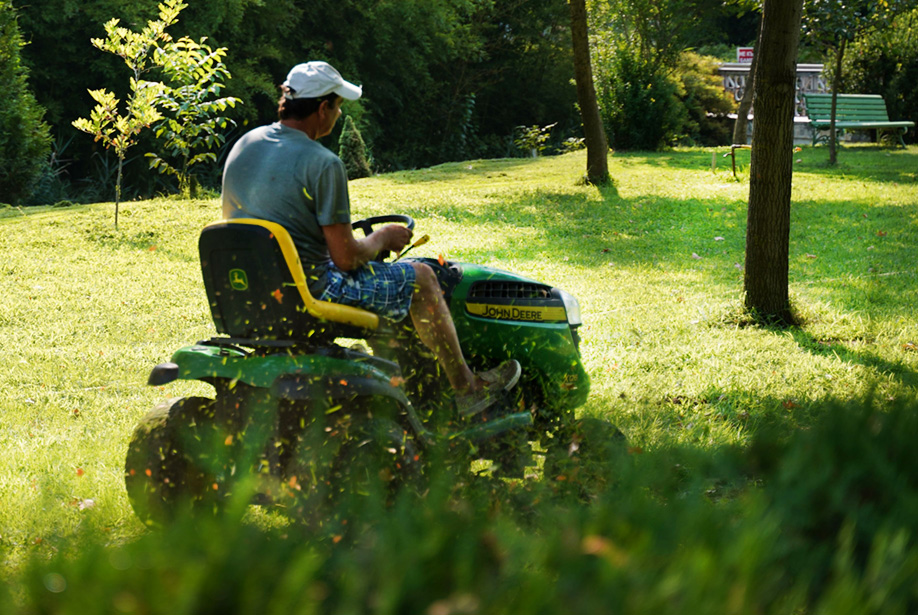
photo by Bonnie Kirn Donahue
For good health, trees require above-ground care and maintenance, such as regular watering and pruning, as well as protection below ground of the root system, which is responsible for absorbing water and nutrients and providing stability.
by Bonnie Kirn Donahue, Extension Master Gardener, University of Vermont
NORTHFIELD — Trees are critically important to life on earth. They help clean the air, transform carbon dioxide into oxygen, provide shade, cool temperatures, retain stormwater, raise property values, provide food and habitat for wildlife, and improve mental health.
Since trees are so good at taking care of us, how can we take care of them?
In addition to the typical above-ground care and maintenance of trees such as watering and pruning, tree roots need protection below ground as well.
Why protect tree roots?
Tree roots are responsible for absorbing water and nutrients and providing stability. While keeping the tree in place, the roots also keep soil in place, helping to prevent erosion and stabilize steep banks.
Trees have a variety of root sizes from thread-like feeder roots to thick, woody roots. All root sizes play important roles in the overall health of a tree.
Most tree roots tend to be in the top 12 inches of soil and extend to at least the edge of the canopy and often beyond. Tree roots need access to oxygen to grow, which is often more available near the soil’s surface.

courtesy photo
When mowing around trees, homeowners should take care not to damage the bark and cambium at the base of the trunk as this could impact the roots’ ability to supply water and nutrients to the tree, causing it to struggle and die.
Given the proximity of tree roots to the soil surface, it is critical that we care for the ground above the roots.
What can we do to protect tree roots?
Roots are sensitive to compaction, so avoid driving or parking under tree canopies planted in lawns. Don’t store heavy objects or equipment under tree canopies. This crushes roots, compacts soil and prevents roots from accessing water and oxygen.
When possible, try to avoid digging within tree canopies. While trees are remarkably resilient, trees have a higher rate of mortality when a critical mass of roots is severed. Hand digging is better than mechanical digging within the tree canopy, as roots can be protected or avoided more easily.
Just like pruning branches, when cutting a tree root, make sure to make a sharp, clean cut. This will help the damaged roots heal faster and prevent disease.
Avoid hitting tree trunks with lawn mowers, weed whackers or other equipment. If the bark and cambium at the base of the tree is damaged either partially or fully (girdled), the roots can no longer send water and nutrients from the roots to the rest of the tree, and the tree is more likely to struggle and die.
Many gardeners place a ring of mulch around trees to protect the trunks as well as eliminate competition from grass. However, when mulching, mulch should not touch the base of the tree. Rather, place mulch three to six inches from the trunk.
Taper the mulch away from where the tree trunk meets the root flare at the base. This will prevent diseases and decay from hurting the tree.
Avoid volcano mulching or piling mulch up over four inches. This practice reduces oxygen to tree roots and causes surface roots to develop. Both are harmful to tree development. Instead, layer mulch from two to four inches.
Finally, avoid adding or removing soil within tree canopies. Adding soil within the tree canopy can suffocate roots, preventing them from accessing water and oxygen. Removing soil will expose roots to the sunlight and air, and they can dry out.
In Vermont, we are lucky to have many trees around us, but we can’t take them for granted. While not always realistic, when possible, try to do the best you can to implement some of these best practices. The trees will thank you.
For more information about selecting and caring for trees, check out the Vermont Urban and Community Forestry Program’s resources at vtcommunityforestry.org
[Bonnie Kirn Donahue is a UVM Extension Master Gardener and landscape architect from Randolph.]






